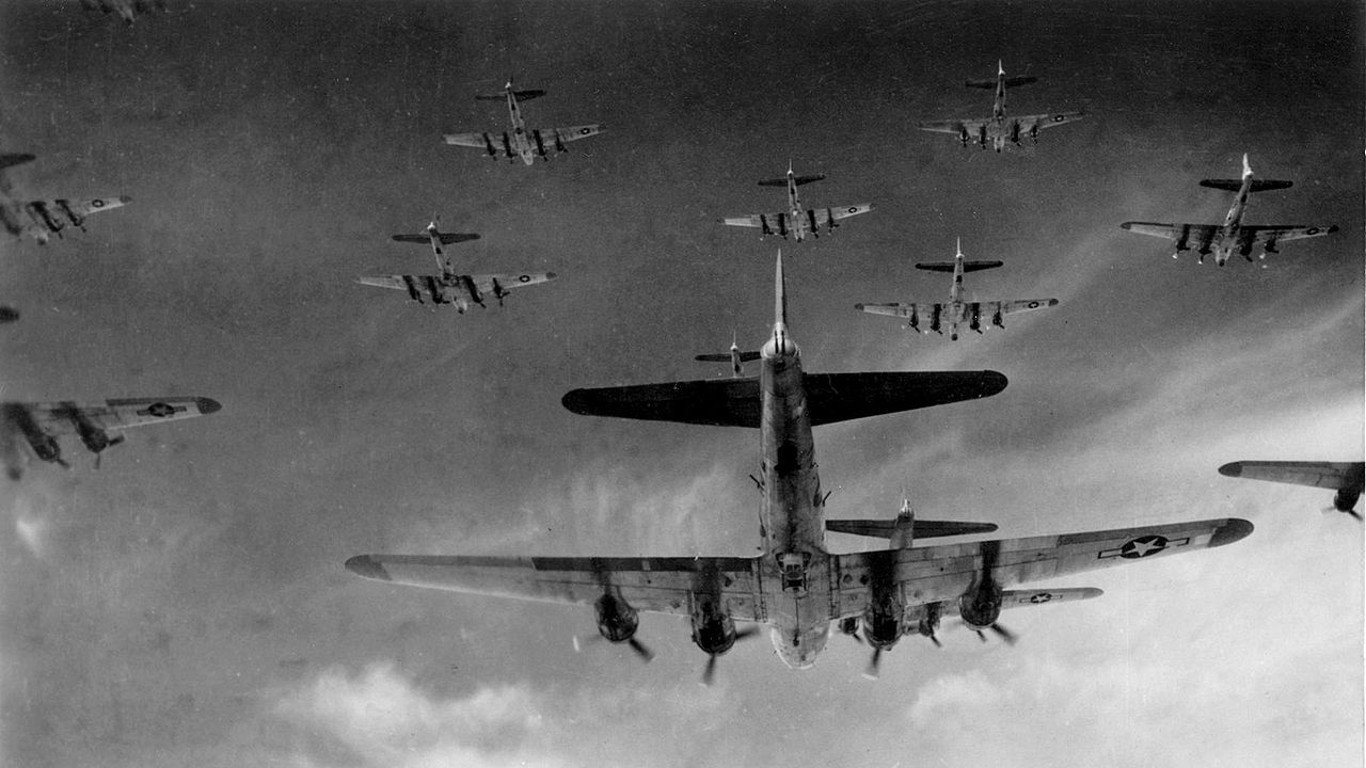The Axis powers – Germany, Italy, and the Japanese Empire – initially gained an edge in World War II because of their technological advancements in weaponry. However, the Western Allies and the Soviet Union eventually overcame this advantage, outpacing their opponents in both technological innovation as well as production capacity. Despite this, German engineering and manufacturing skills played a significant part in prolonging the conflict. Both sides deployed a wide range of weaponry, with certain guns, airplanes, or armaments gaining legendary status because of their widespread use and recognition.
In compiling a list of 33 of the most iconic weapons of World War II, 24/7 Tempo consulted multiple sources that detailed the conflict’s history, rifles, bombers, fighter planes, and other weapons used by both sides.
Nazi Germany’s arsenal included some of the most feared weapons of World War II, such as the Panzer and Panther tanks, the Messerschmitt Bf 109 fighter plane, the U-boat fleet; the MG-42 machine gun; the 88mm anti-aircraft gun.
After Germany’s invasion pushed the Soviet Union into a defensive position in 1941, the Soviets introduced their own revolutionary weapons, including the T-34 tank, the Katyusha rocket launcher, and PPSh-41 submachine gun.
The United States, under President Franklin Roosevelt’s “Arsenal of Democracy” initiative, used its incomparable manufacturing capacity to produce thousands of powerful weapons, including the M4 Sherman tanks, P-51 Mustang long-range fighters, and B-17 Flying Fortress heavy bombers. (See America’s fastest planes that served in WWII.)
Great Britain and Japan also produced some of the most memorable aircraft of the war. The Hurricane and Spitfire played pivotal roles in Britain’s victory during the Battle of Britain in 1940, while the Japanese Zero maintained a technological edge over the Allies’ air capabilities throughout much of the war.
Here are the weapons that made history in World War II:
T-34 tank

- Used by: Soviet Union
The T-34, often referred to as the “Stalin tank,” was a heavily armored Soviet tank that played a significant role in World War II. Its outstanding performance during the Battle of Kursk in 1943 solidified its reputation as an indomitable force. With a balanced combination of mobility, firepower, and armor, it proved to be a formidable adversary against Nazi Germany and was instrumental in the Soviet Union’s victory.
Katyusha rocket launcher
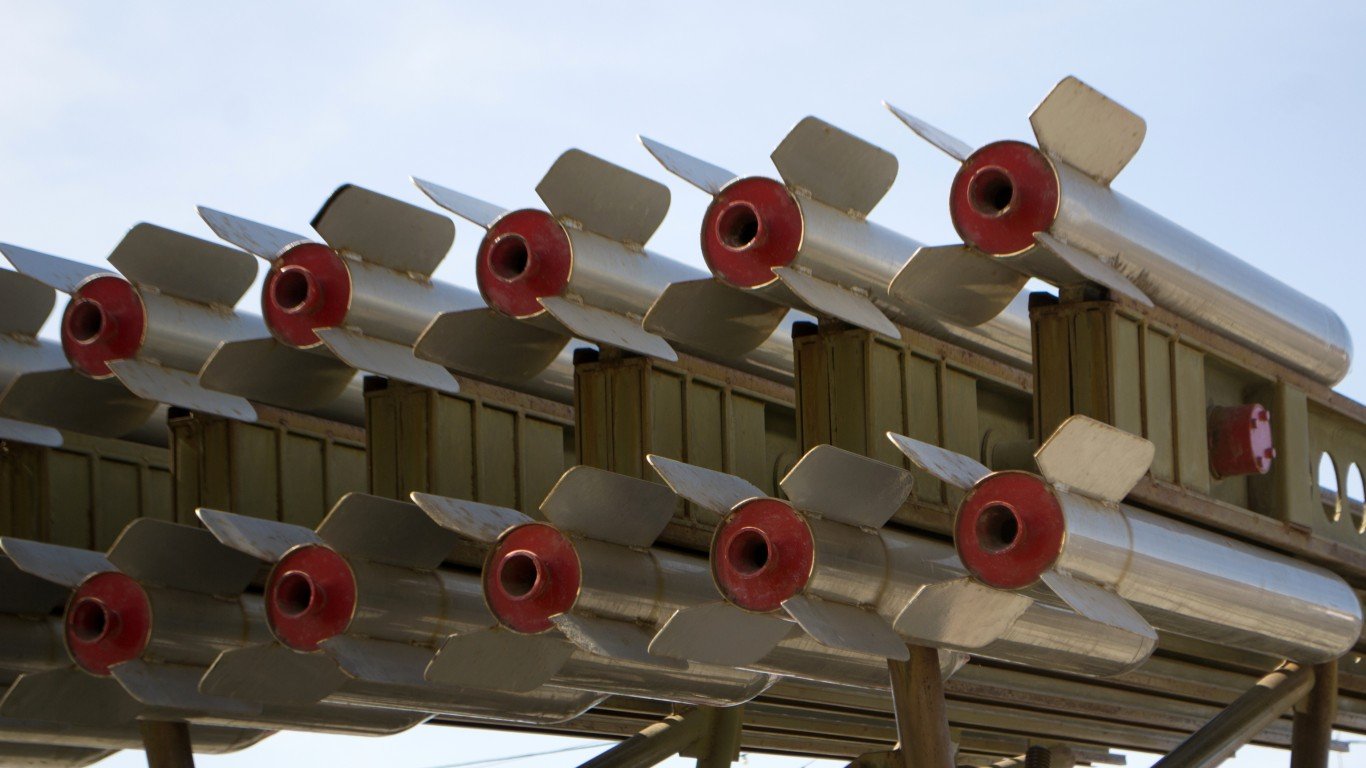
- Used by: Soviet Union
The Katyusha rocket, nicknamed “Stalin’s Organ” due to its distinctive sound during flight, was a versatile multiple-rocket launcher. Capable of launching up to 16 rockets simultaneously, it was highly mobile and was widely used in battles like the siege of Berlin. With over 500,000 units produced during the war, its rapid fire capability and destructive force made it a formidable weapon, despite its drawbacks of being relatively fragile, slow to reload, and less precise than traditional rocket launchers.
Mosin-Nagant Model 1891 rifle
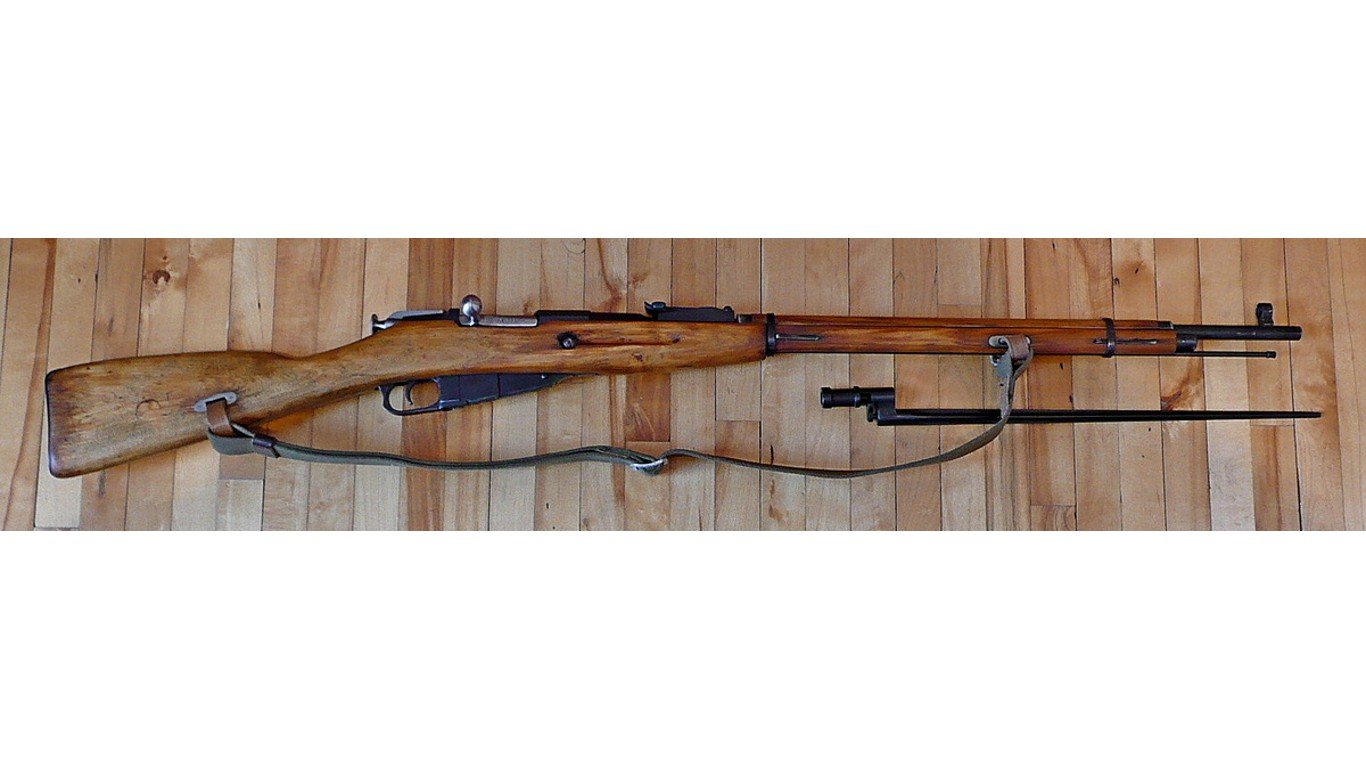
- Used by: Soviet Union
The Mosin-Nagant Model 1891 rifle, known as the “Three-Line Rifle” by the Soviets, served as the primary firearm for the Soviet Union during World War II. With production exceeding 37 million units were from 1891 to 1967, this rifle was prized by soldiers for its durability and precision at long distances. It played a substantial role in the Battle of Stalingrad, where its performance in close combat solidified its reputation as an exeptional weapon.
PPSh-41 submachine gun
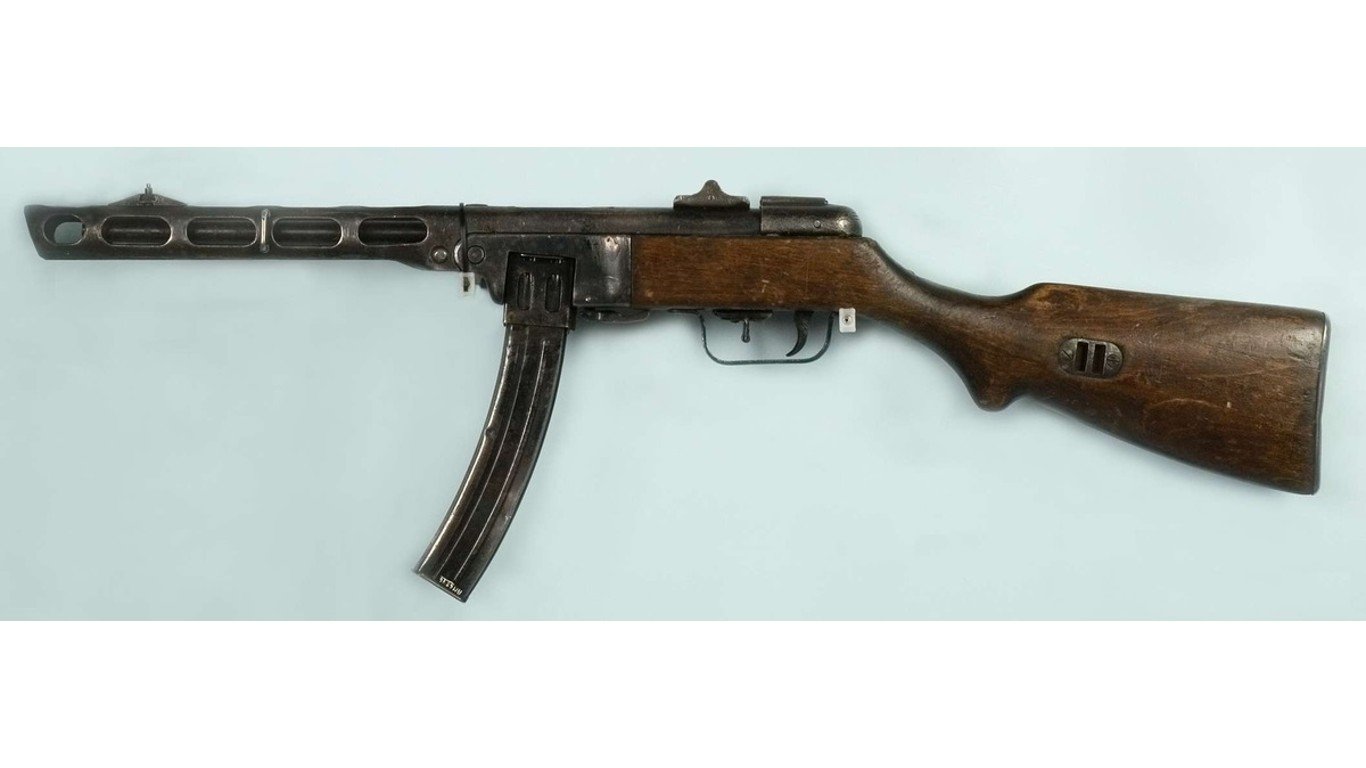
- Used by: Soviet Union
The PPSh-41 submachine gun was one of the most widely produced firearms in history, with over 6.5 million units manufactured. Called the “Burp Gun” because of its unique firing sound, it became a staple of the Soviet infantry, notably during the Battle of Stalingrad. Renowned for its rapid-fire capability and large magazine size, this compact and dependable weapon remained in service beyond WWII, and continues to see use in global conflicts to this day.
Panzer VI Tiger tank
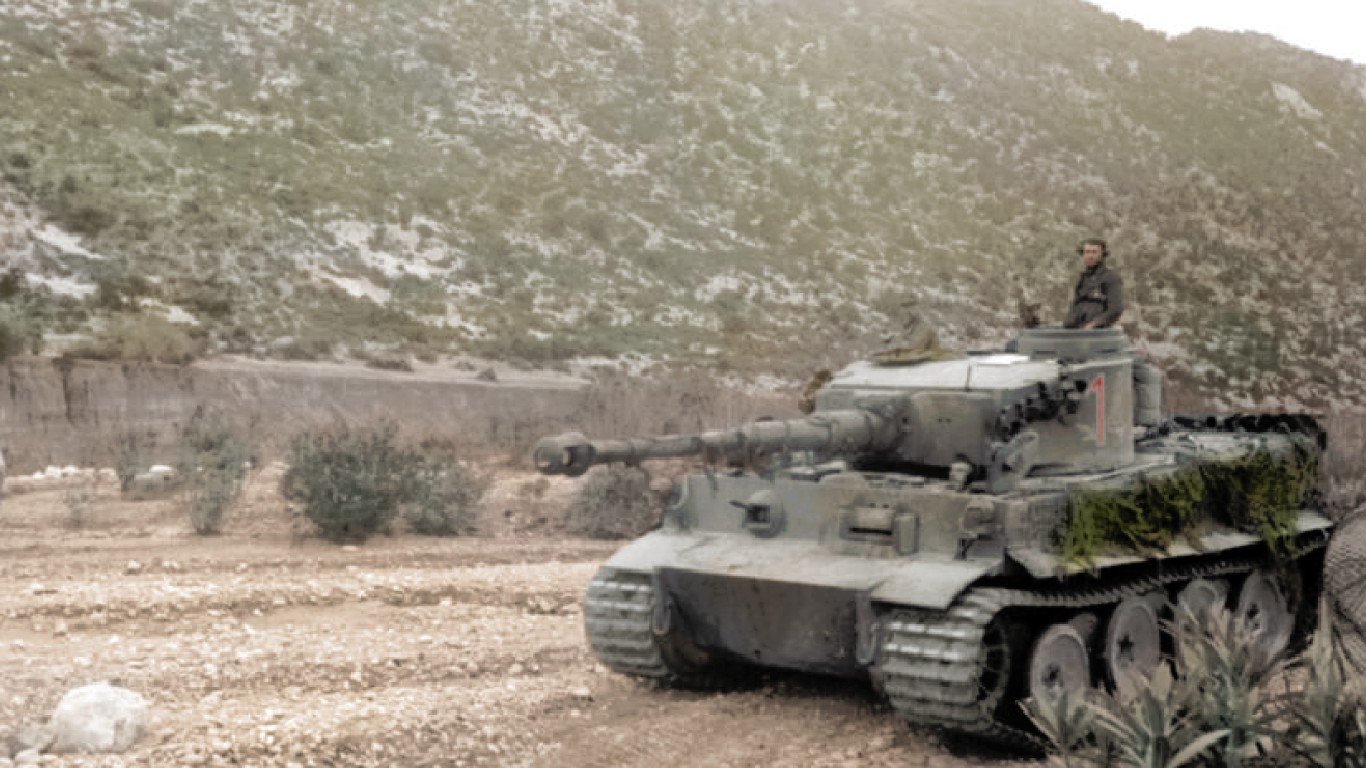
- Used by: Nazi Germany
The Panzer VI Tiger, also know as the “King Tiger” or”Royal Tiger,” was a powerful asset for German forces during World War II. With over 1,400 units produced and 500 deployed to the Eastern Front, it successfully engaged the SovietT-34 and KV-1 tanks. Celebrated for its power and performance, it became emblematic of German military expertise during the war.
Panther IV and V tanks
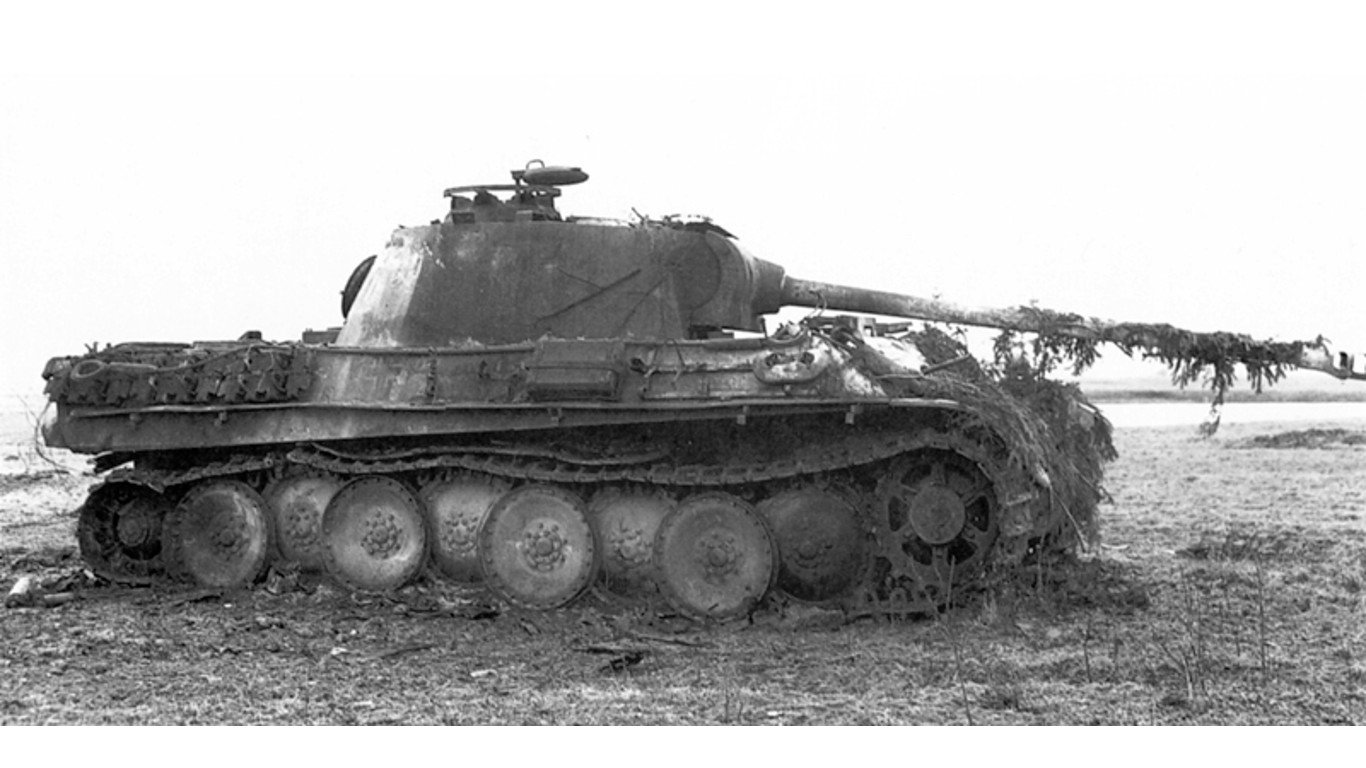
- Used by: Nazi Germany
The Panther IV and V tanks, known as “the Cat” and “the Panther,” were standout models in the German tank fleet during World War II, with production numbering into the thousands. The Panther IV distinguished itself at the Battle of Kursk, while the Panther V had enhanced armor and firepower in its later versions. Both played crucial roles in supporting the Nazi war effort.
Messerschmitt Bf 109 fighter aircraft
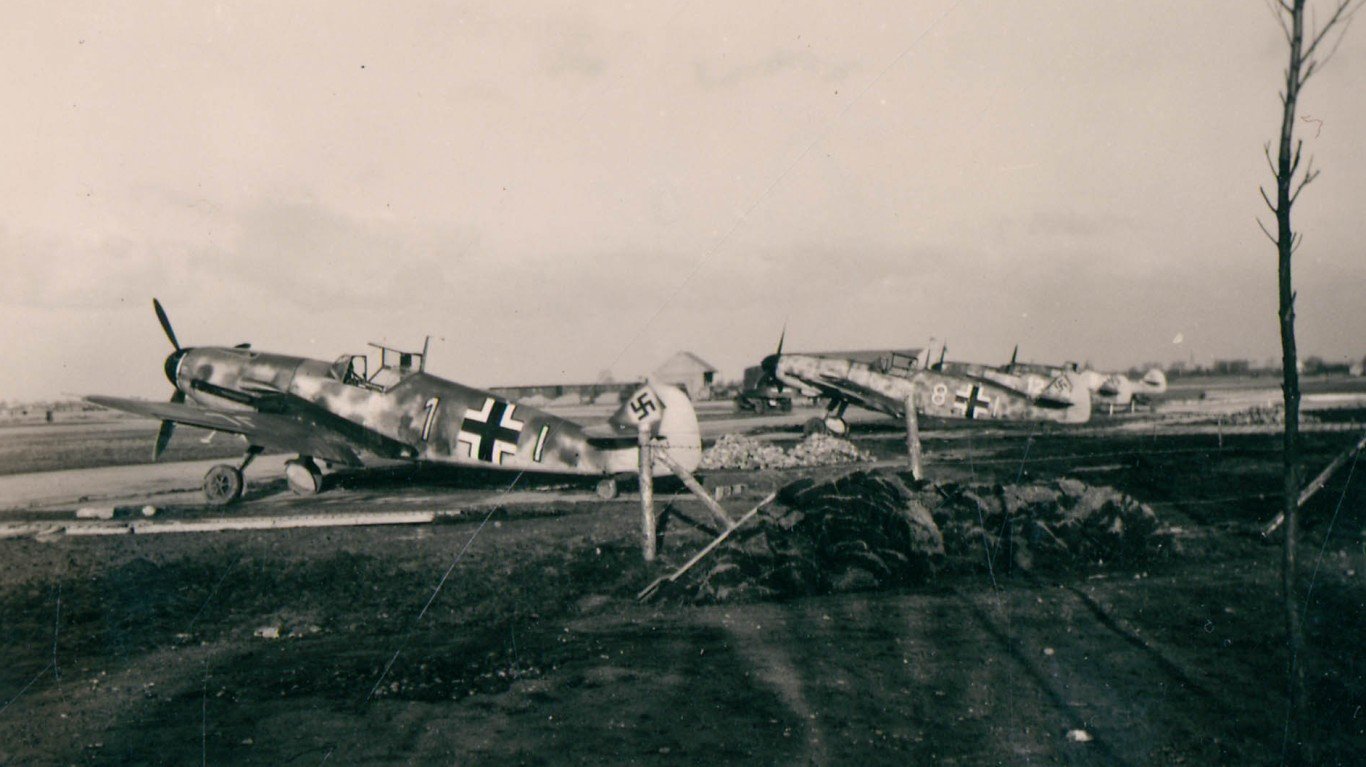
- Used by: Nazi Germany
The Messerschmitt Bf 109, often called the “Me 109,” holds the distinction of being the most produced fighter aircraft in history, with over 34,000 units manufactured. As one of the earliest modern fighters, it participated in every major theater of World War II, including the Battle of Britain. Known for its speed and agility, it stood as a key component, alongside the Focke-Wulf Fw 190, of Germany’s formidable air force during the war.
MG-42 machine gun
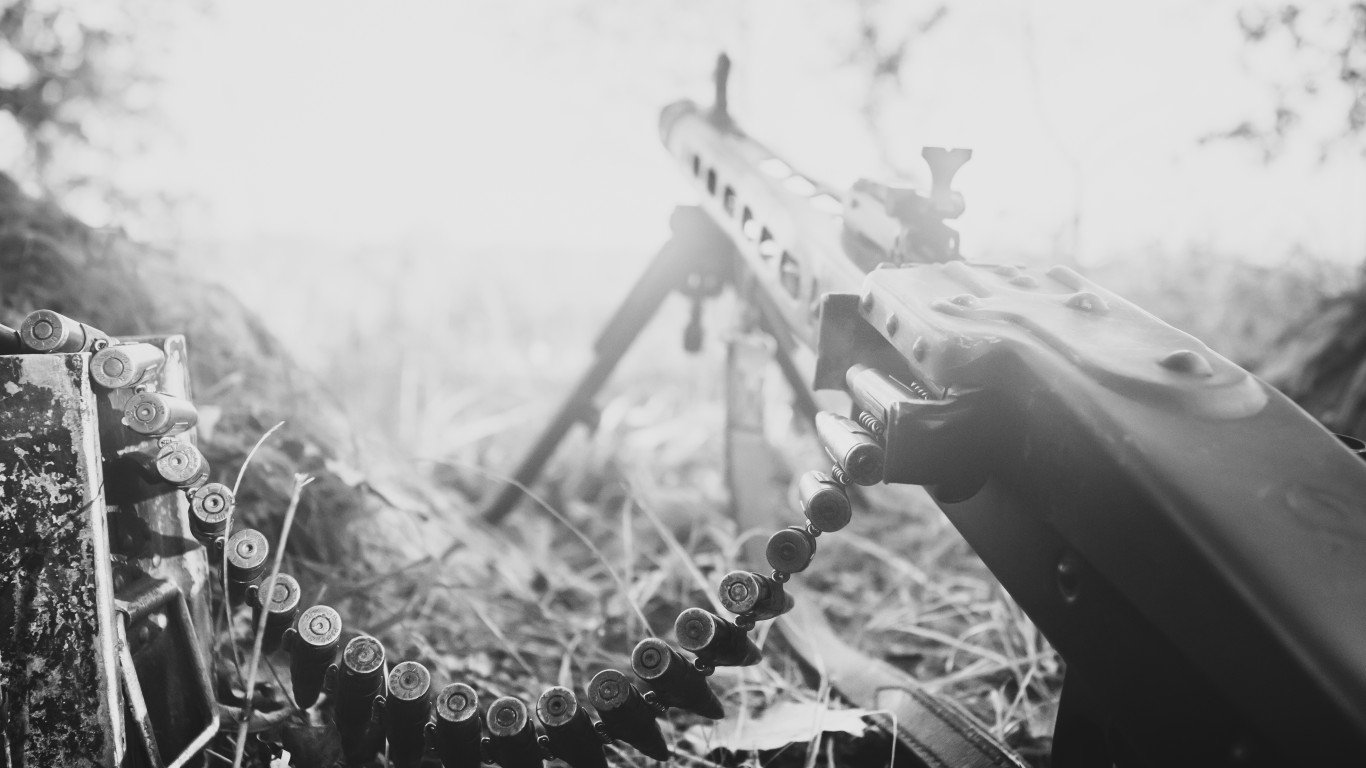
- Used by: Nazi Germany
The MG-42, dubbed “Hitler’s Buzzsaw,” was a groundbreaking machine gun known for its exceptional accuracy and incredibl firing rate of up to 1,200 rounds per minute. Introduced in 1942, over 400,000 were produced by the end of the war. It gained popularity among soldiers, and saw action on both the Eastern and Western Fronts.
U-Boat submarine
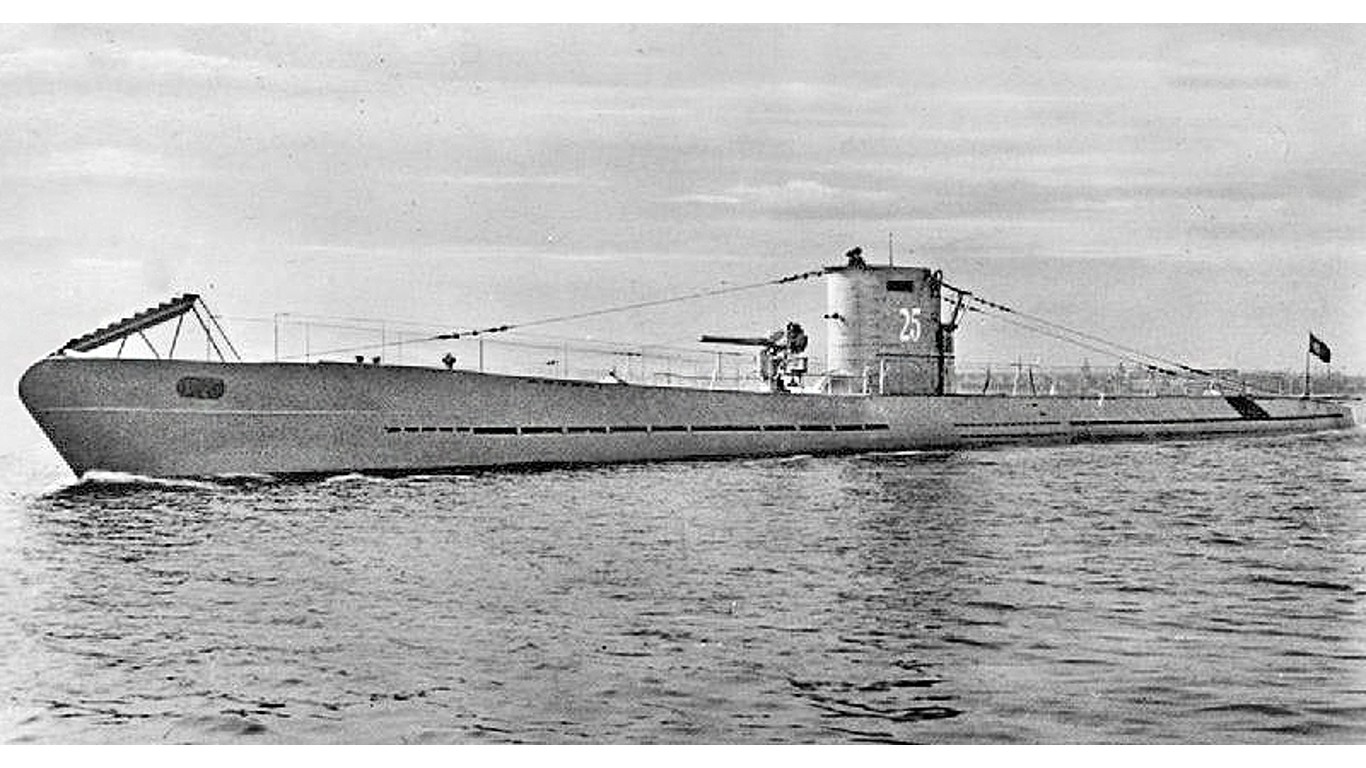
- Used by: Nazi Germany
The first U-boats or “Unterseeboots,” were developed in the 1850s, with subsequent versions seeing action in World War I. Between 1935 and 1945, Germany produced 1,162 advanced U-boat models that became some of the most feared weapons of World War II. Known as “The Gray Wolves,” these submarines operated in formations known as “wolfpacks,” inflicting substantial damage on Allied fleets by sinking 2,779 ships. They played a pivotal role in the Battle of the Atlantic, the German campaign to disrupt British shipping, resulting in the loss of thousands of tons of vital cargo.
Luger pistol

- Used by: Nazi Germany
The Luger pistol, often called the “the people’s pistol,” was a widely used semi-automatic sidearm. With over two million units produced from 1900 to 1945, it became a staple firearm known for its reliability and precision. Its accuracy made it a preferred choice among German soldiers during the war.
V-1 flying bomb
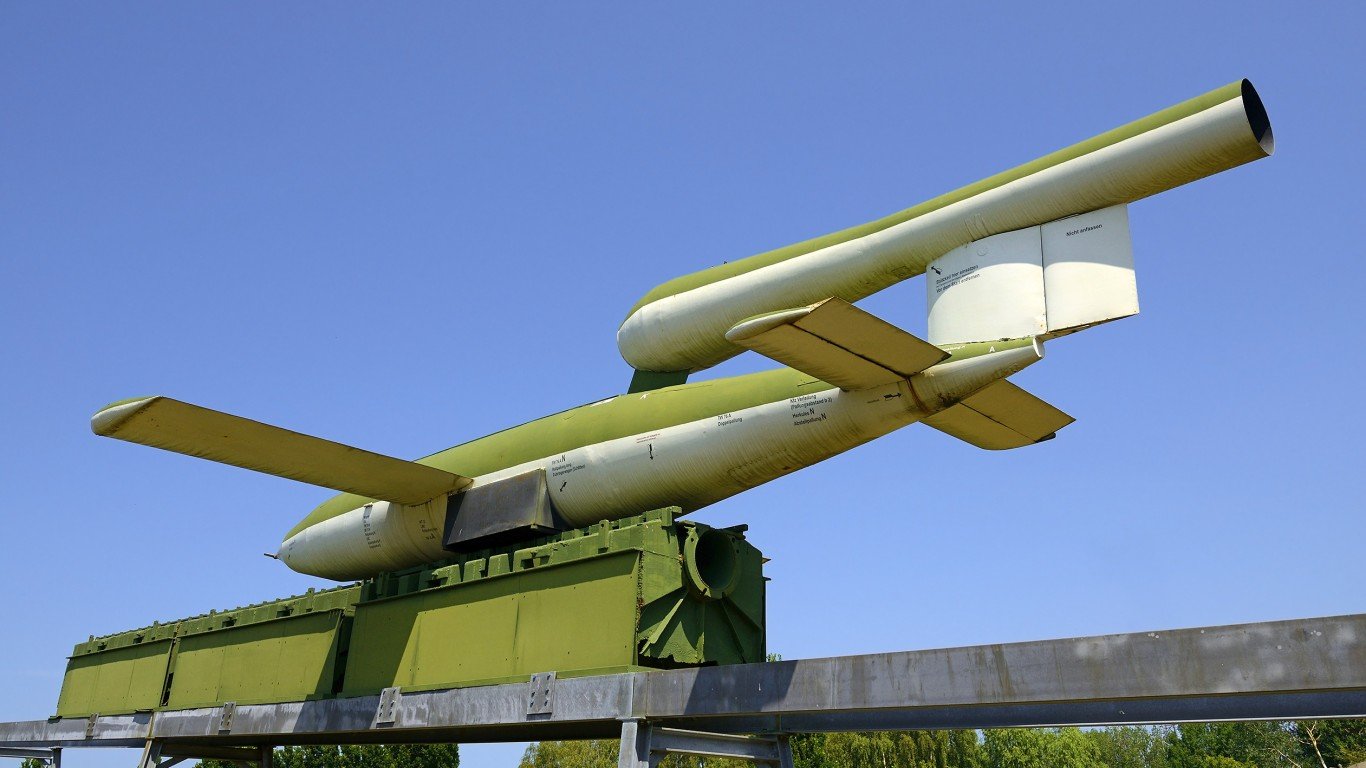
- Used by: Nazi Germany
The Nazis deployed the V-1 Flying Bomb, commonly known as “the Buzz Bomb” or “Doodlebug,” to launch long-range attacks on London and other British targets in 1944. With over 30,000 produced, its effectiveness prompted the allies to focus on countering it, leading to the development of Operation Diver. This initiative improved the positioning of anti-aircraft guns and introduced technological advances to combat the threat more effectively.
V-2 rocket
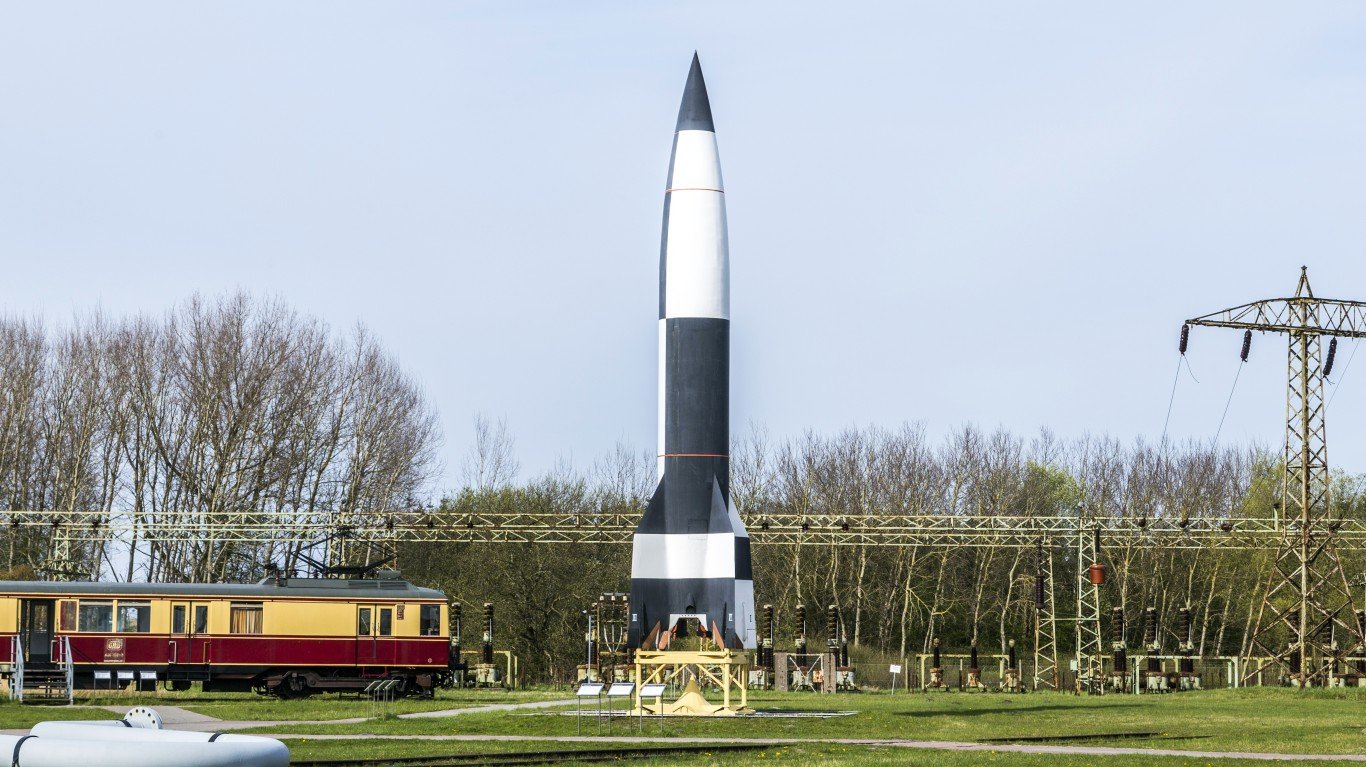
- Used by: Nazi Germany
The successor to the V-1, the V-2 was the first supersonic long-range ballistic missile equipped with a guidance system. Launched over 3,000 times starting in late 1944, these rockets primarily targeted London and later Antwerp. Their immense destructive capability led to significant casualties and damage, proving challenging for British defensive measures.
Panzerfaust anti-tank weapon
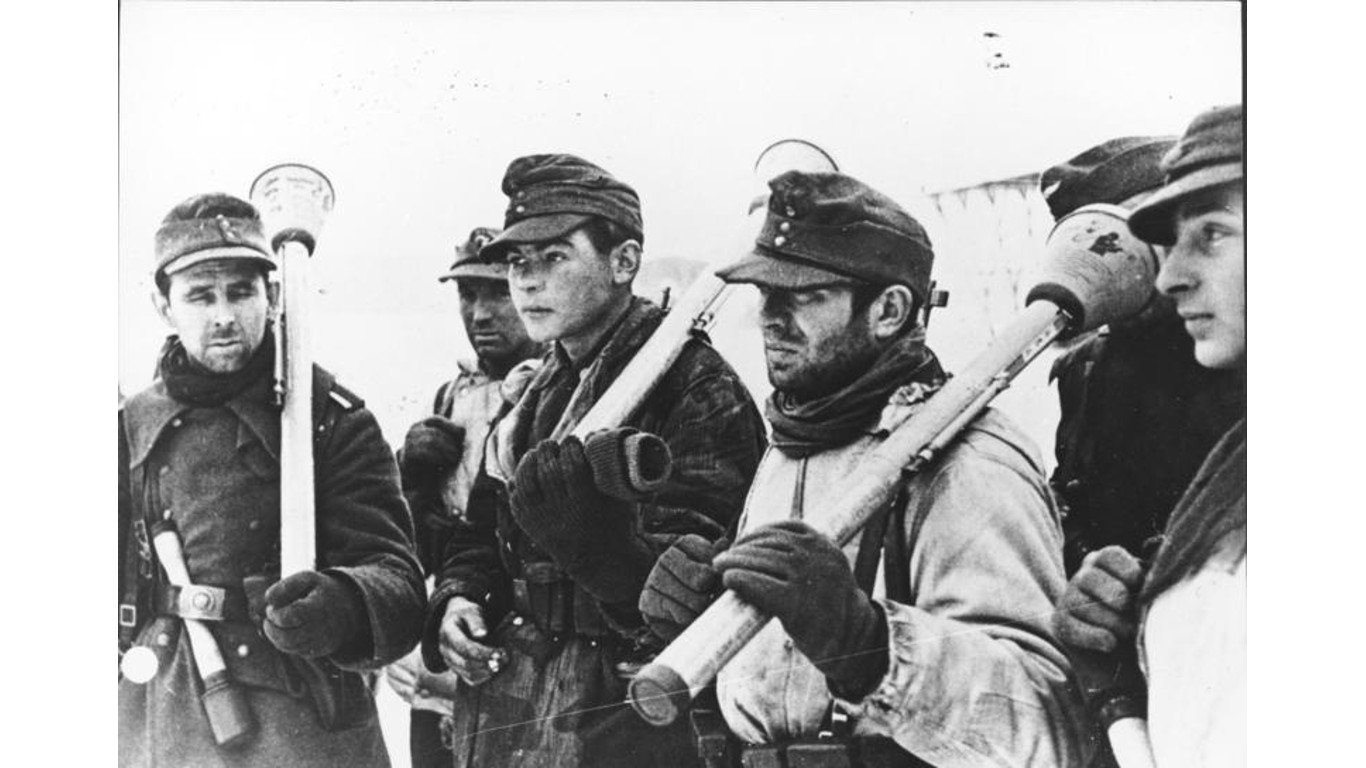
- Used by: Nazi Germany
The Panzerfaust, a single-shot recoilless German anti-tank weapon, earned the nickname the “poor man’s tank killer” because of its effectiveness. Lightweight and user-friendly, it was produced in vast numbers and played an important role in the Battle of the Bulge, neutralizing many Allied tanks. Its straightforward design and devastating power made it a favorite among German soldiers.
MP40 submachine gun
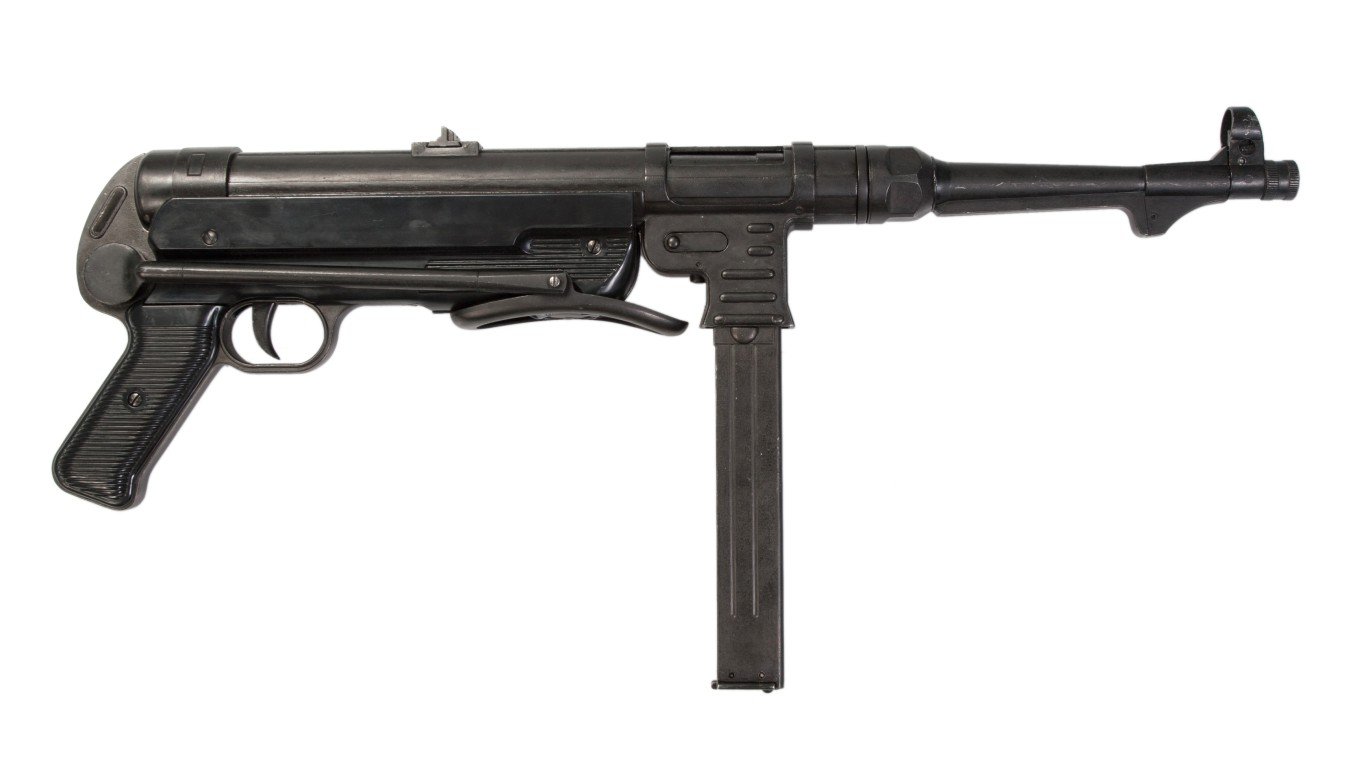
- Used by: Nazi Germany
The MP40 submachine gun, known as the Schmeisser due to its designer’s earlier work, was a preferred weapon among Nazi forces. Produced in vast numbers, exceeding a million units from 1938 to 1945, its lightweight design and dependable performance made it popular on the battlefield. It was also instrumental in allowing troops to maneuver quickly and engage enemies with precision.
88 mm anti-aircraft and anti-tank gun

- Used by: Nazi Germany
The 88mm gun, formerly known as the 8.8 cm Flak, was initially designed in the 1930s as an anti-aircraft weapon. However, its effectiveness against tanks became evident, particularly with armor-piercing rounds. Its precision and firepower proved invaluable in numerous battles, from the Siege of Leningrad to the Battle of the Bulge.
M24 hand grenade
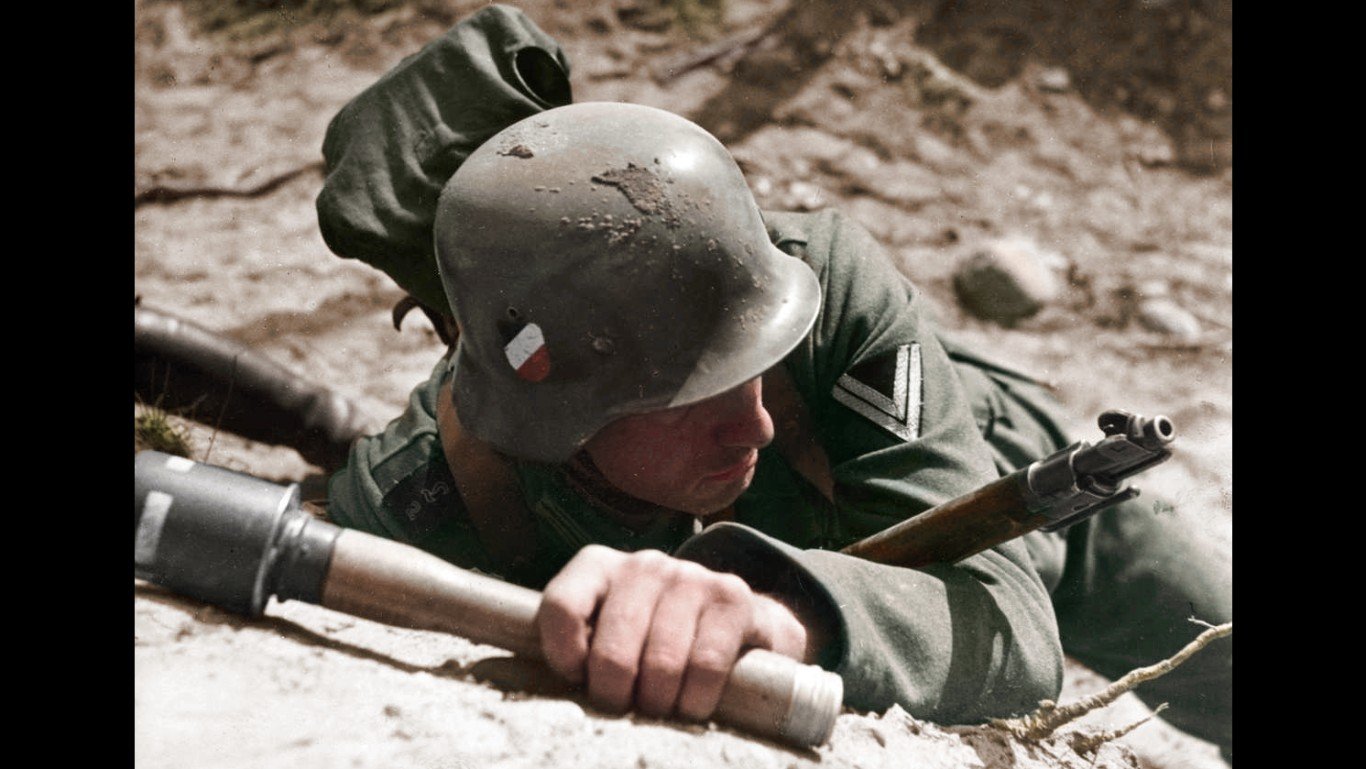
- Used by: Nazi Germany
The M24, an updated version of the Stielhandgranate or “stick hand grenade” was nicknamed “the potato masher” by the British because of its distinctive shape. With over four million unitsproduced, this grenade was a popular and potent combat weapon. Its reliability and destructive capabilities were proven in major battles such as the Battle of Stalingrad.
M1 Garand rifle
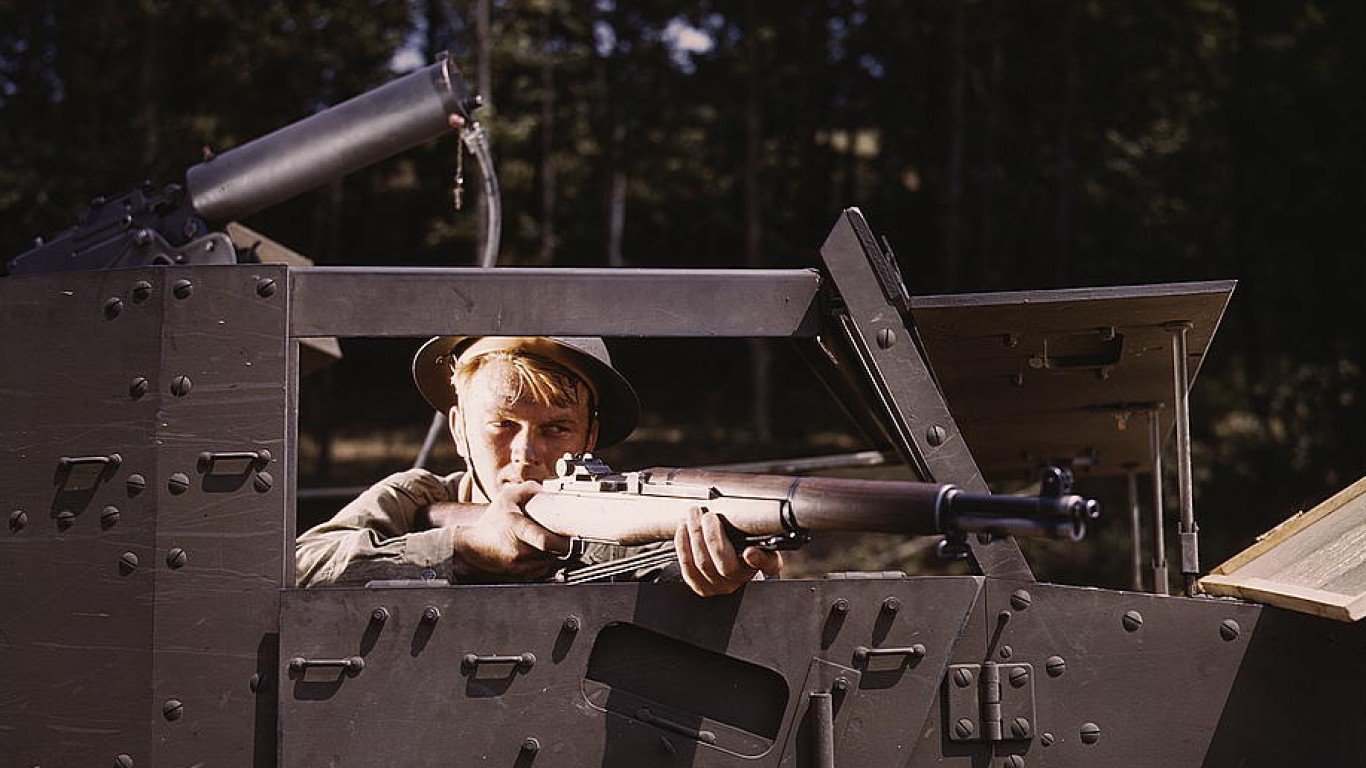
- Used by: United States
General George S. Patton called the M1 Garand, “the greatest battle implement ever devised.” This semi-automatic rifle was prized for its firepower, accuracy and reliability, making it indispensable on the battlefield. With over five million units produced, and it became a standard weapon across all branches of the U.S. military and continued to serve in the Korean War after World War II.
M2 Browning machine gun
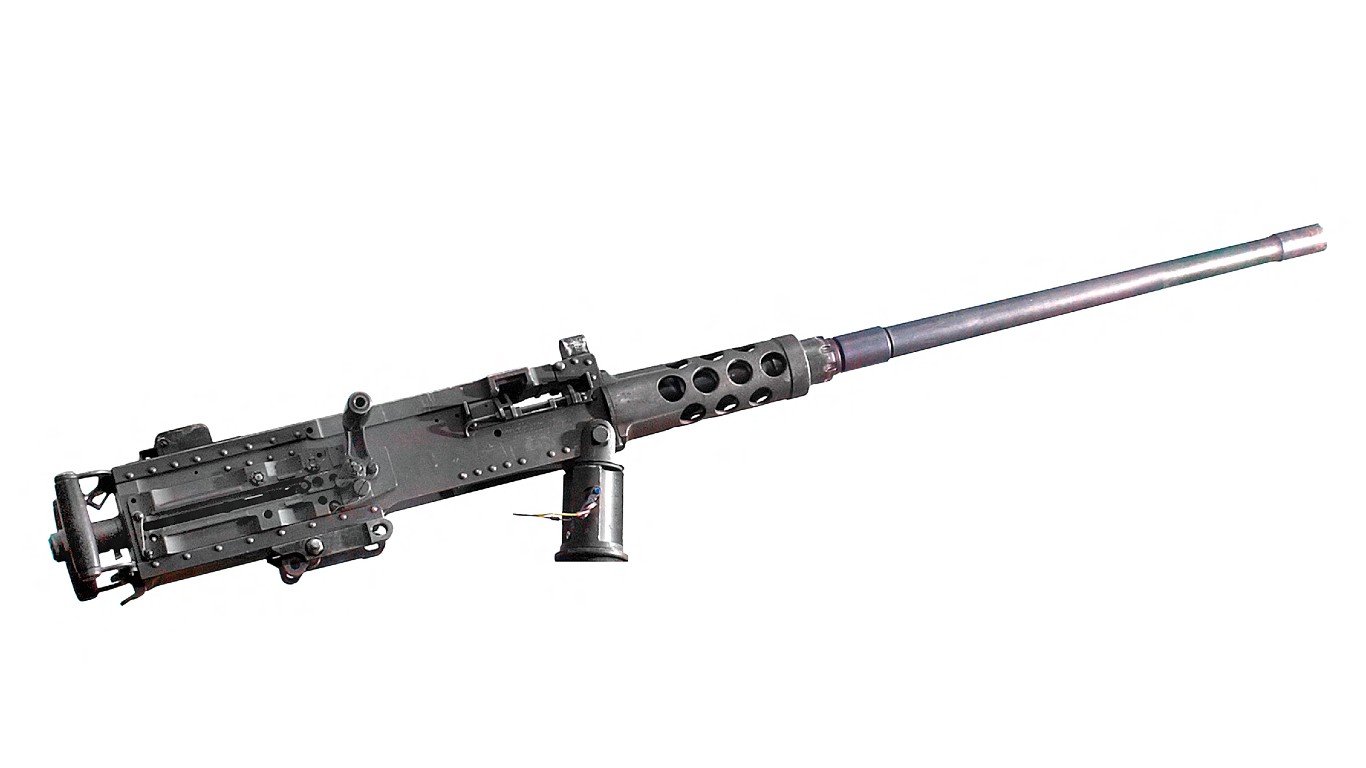
- Used by: United States
Created by famous gunsmith John Browning during World War I, the M2 Browning .50-cal machine gun, known as the “Ma Deuce,” played a major role in significant World War Ii battles like the Battle of the Bulge and the invasion of Iwo Jima. Its successors have seen action worldwide, participating in nearly every major conflict since, including the Korean, Vietnam War, and the war in Afghanistan.
P51 Mustang long-range fighter
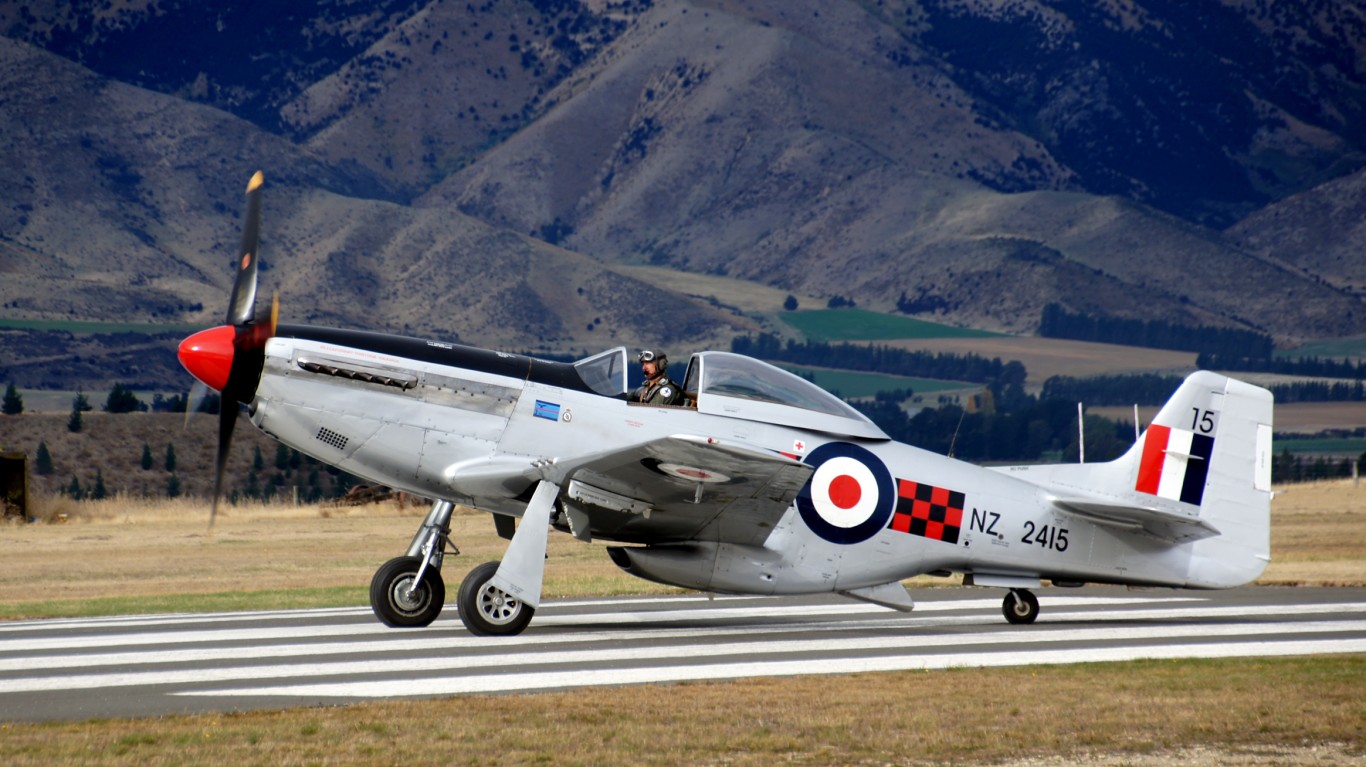
- Used by: United States
The P51 Mustang, sometimes called the “Cadillac of the Skies,” was a long-range fighter-bomber that was popular with pilots and aviation aficionados. Used by Britain’s Royal Air Force as well as the air forces of Canada and New Zealand, and the U.S. Army Air Forces, this aircraft was known for its impressive speed, agility, and firepower.
M4 Sherman tank
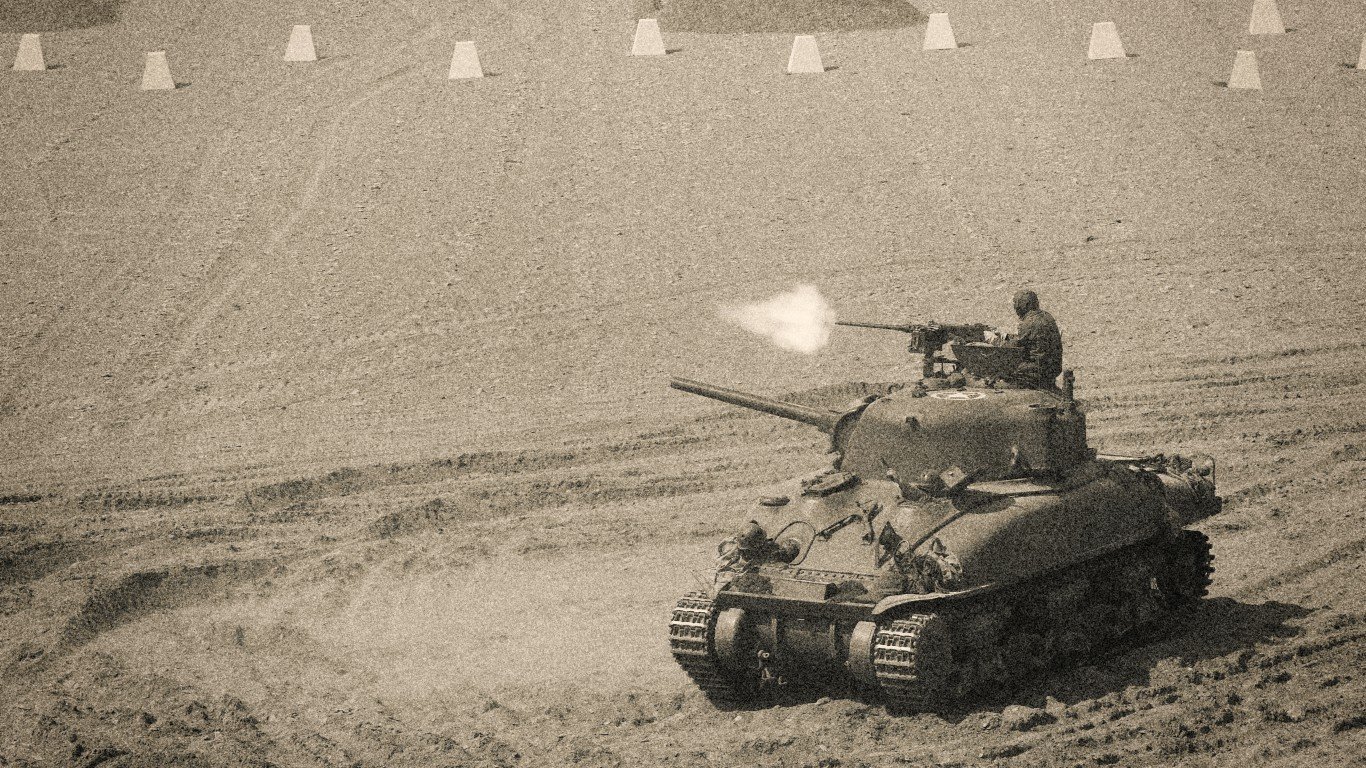
- Used by: United States
The M4 Sherman, a medium tank widely used by both the U.S. and British forces, played a vital role in numerous battles across North Africa, Italy, Normandy, and beyond. With production exceeding 49,000 units, this versatile tank was valued for its durability, versatility and superior armaments. Yet, its initial design made it susceptible to fires upon impact, leading to tongue-in-cheek nicknames “Zippo” and “Ronson” (after popular cigarette lighter brands), and “Tommycooker” by the Germans, referencing “Tommy” as being slang for a British soldier.
Mk 2 ‘Pineapple’ hand grenade
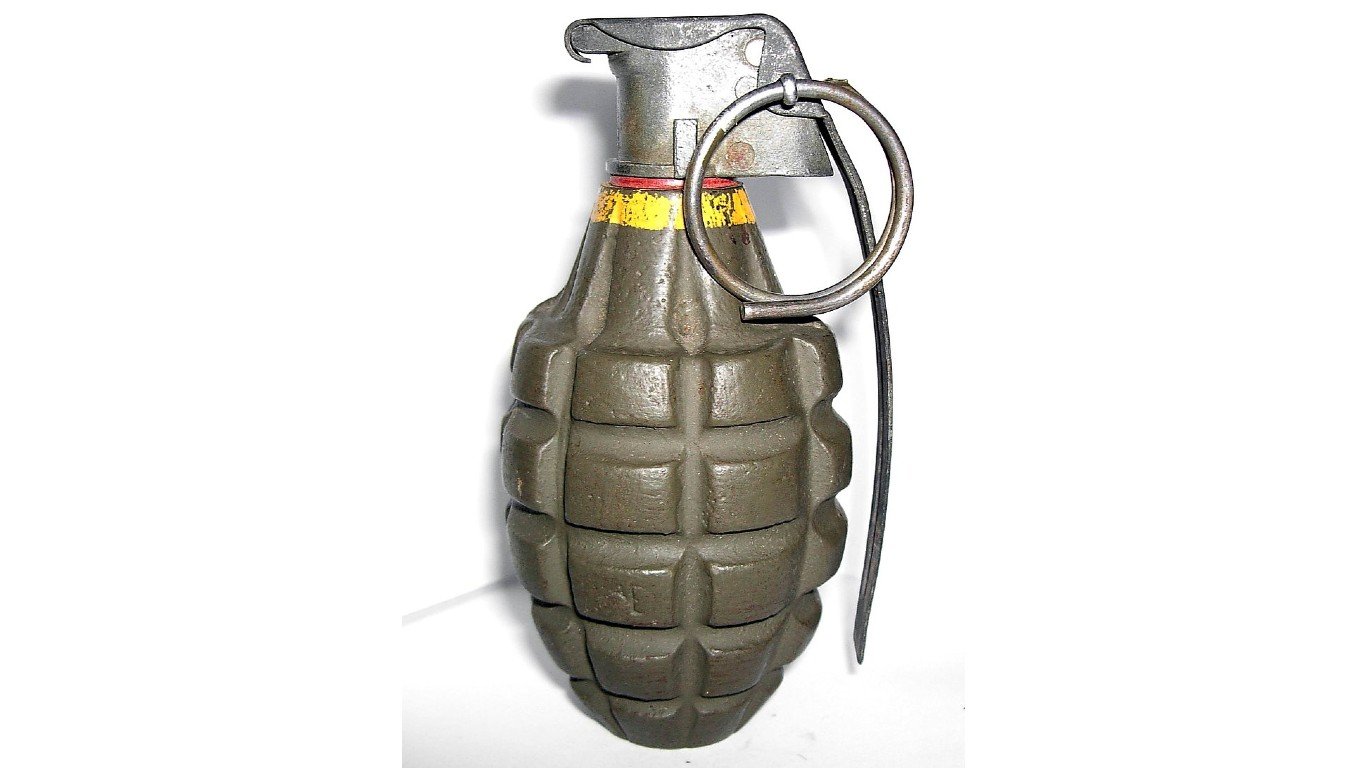
- Used by: United States
Introduced in 1918 and in service until 1969, the Mk 2 fragmentation grenade was a powerful and dependable anti-personnel weapon during World War II. Recognized by its distinctive grooved exterior, it earned the nickname “the pineapple.” With production exceeding 20 million units, over six million were manufactured during the war years alone.
Bazooka
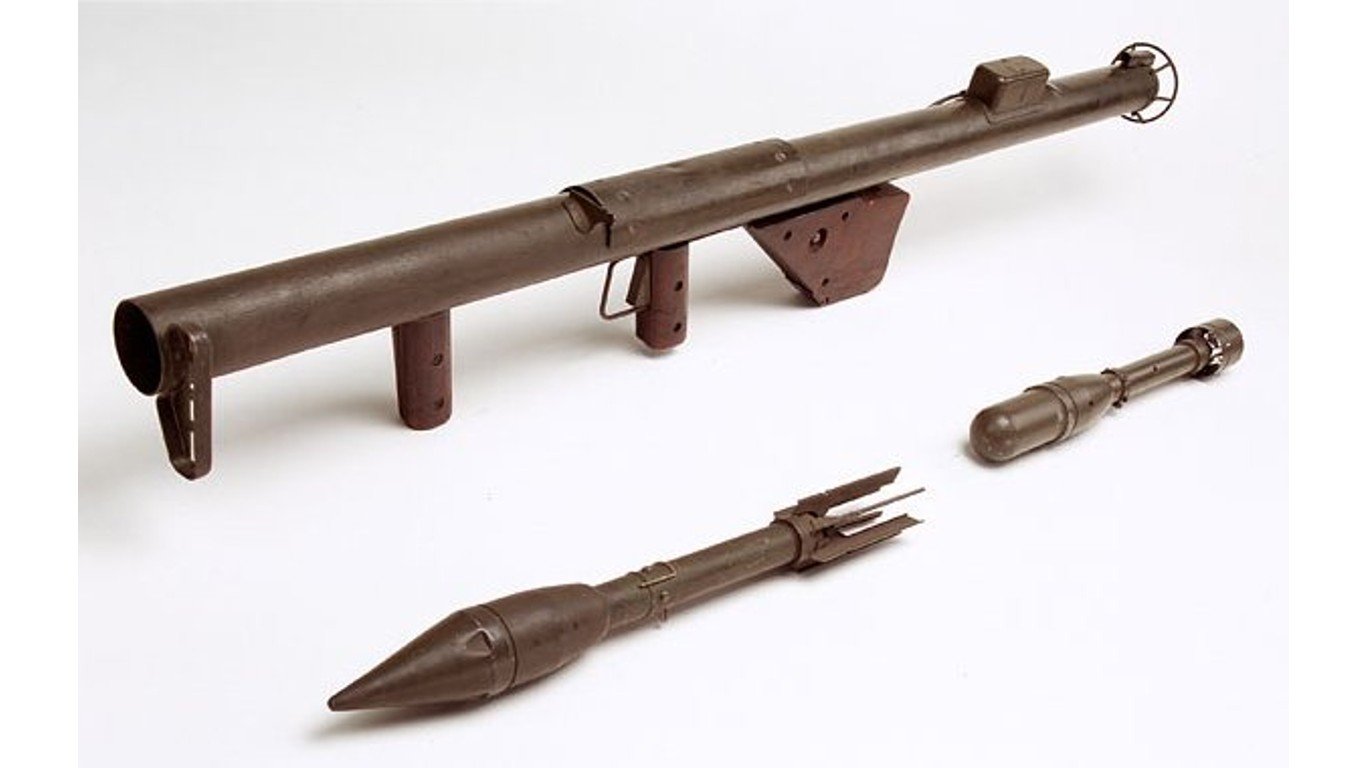
- Used by: United States
The bazooka, a portable recoilless anti-tank rocket launcher, played a significant role during World War II, targeting tanks, bunkers and machine-gun nests. Although it was developed by the U.S., both German and Japanese forces developed their own versions after capturing some examples from the Americans. Initially referring to a specific weapon, the M1, the term “bazooka” later became a generic name for any shoulder-launched anti-tank weapon.
Thompson M1A1 submachine gun

- Used by: United States
While the Tommy gun gained notoriety during the Prohibition era, earning it the nickname “the Chicago typewriter” after the St. Valentine’s Day Massacre, it also became a staple for the U.S. forces in World War II. With over a million-and-a-half produced, the gun saw action in key battles like the Battle of the Bulge and Battle of Okinawa.
B-29 Superfortress airplane
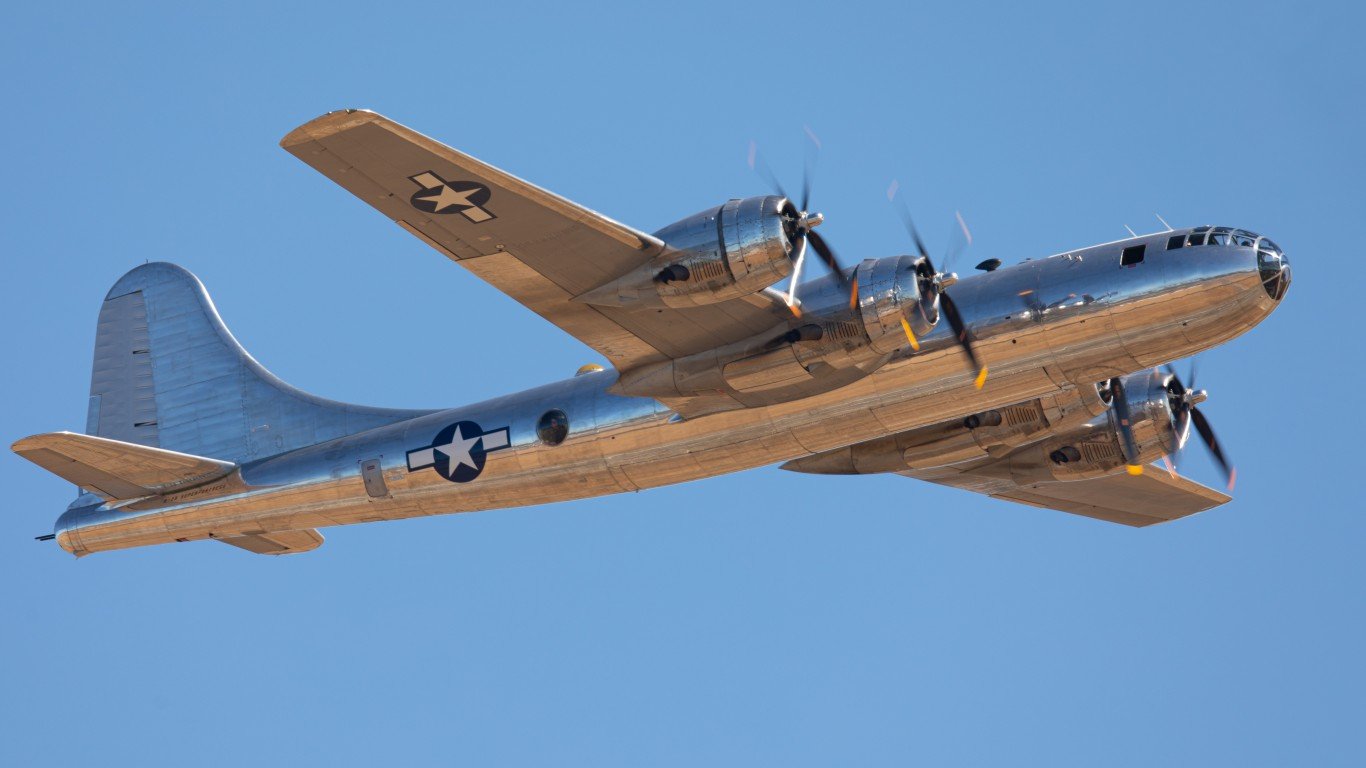
- Used by: United States
The B-29 Superfortress, known as “Super” and “Forts,” was a powerful four-engine American bomber deployed extensively during World War II. It was the most advanced and most expensive aircraft of its era with over 4,000 built. The plane played a major rold in the Allied victory, particularly in the Pacific Theater, where it carried out incendiary bombing missions, ultimately leading to atomic bombings of Hiroshima and Nagasaki.
B-17 Flying Fortress heavy bomber aircraft
- Used by: United States
The B-17 Flying Fortress, a forerunner to the B-29, was another iconic heavy bomber used by the U.S. in World War II. While it faced challenges at the Battle of Midway, it scored success in the Battle of the Bismarck Sea. Its impressive defensive weaponry and substantial payload capabilities led to its legacy as one of the most important aircraft to serve in the war.
M101 howitzer
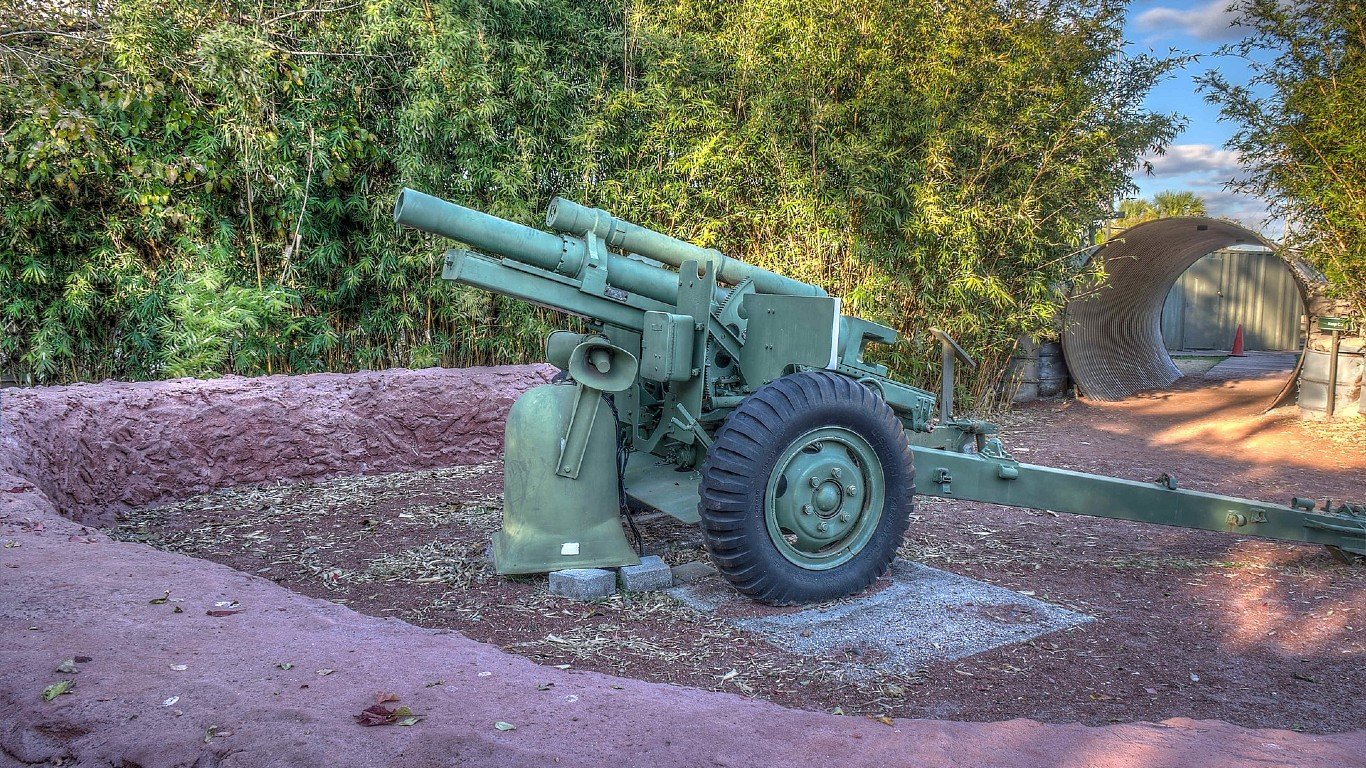
- Used by: United States
The M101 howitzer is a portable American 105mm light field artillery piece, introduced in 1941 and used extensively by the United States during World War II. With a range of approximately seven miles, it was a crucial part of key battles such as the Battle of the Bulge and Battle of Okinawa, demonstrating its reliability and effectiveness on the battlefield. Production exceeded 15,000 units during the war, and its service extended into the Korean and Vietnam conflicts. Today it remains in occasional use by the National Guard.
Atomic bomb
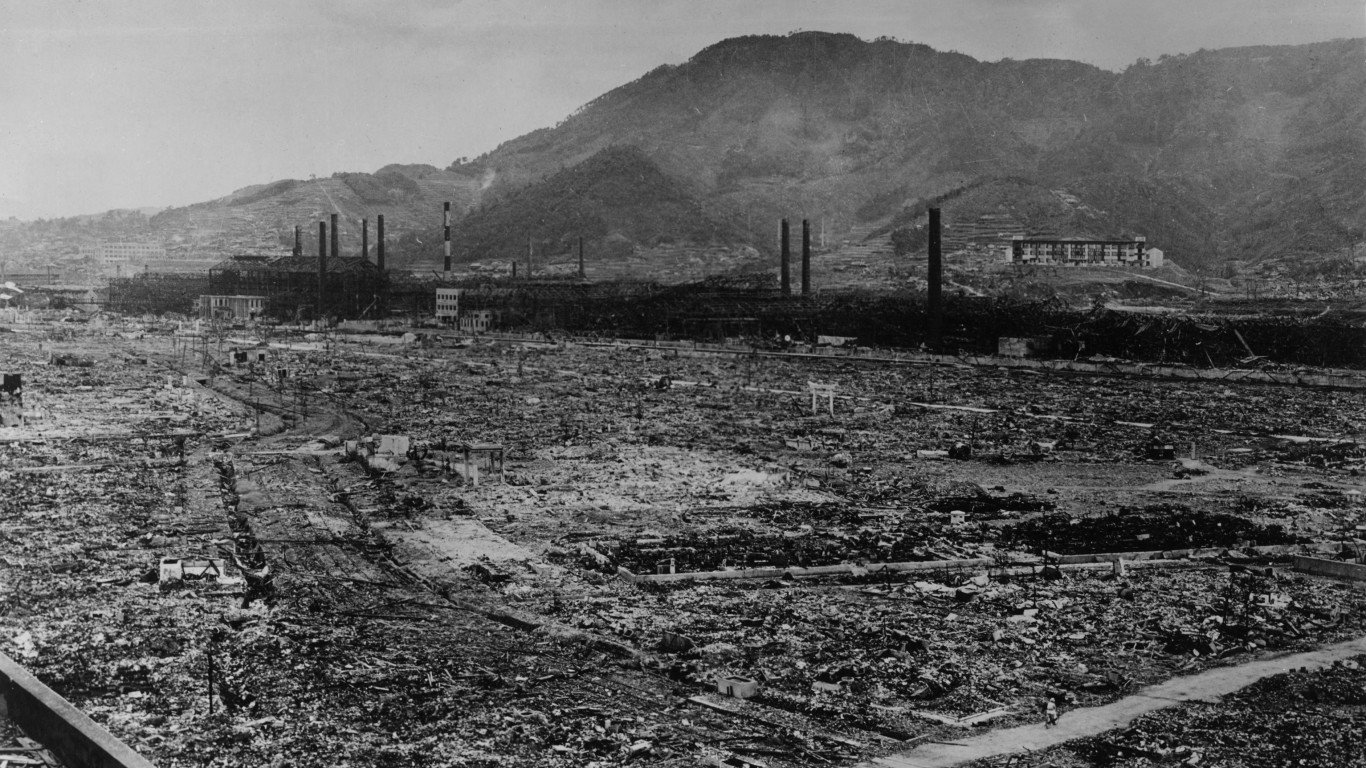
- Used by: United States
The atomic bombs detonated over Hiroshima and Nagasaki during World War II remain the only nuclear weapons ever used in warfare. Nicknamed “Little Boy” and “Fat Man,” these bombs were developed at the Los Alamos Laboratory in New Mexico. On Aug. 6, 1945, a uranium fission bomb was dropped on Hiroshima, followed by a plutonium fission bomb three days later on Nagasaki. The immediate aftermath was catastrophic, with a combined death toll of over 200,000. The atomic bomb is recognized as one of the most devastating weapons ever used.
Lee-Enfield rifle
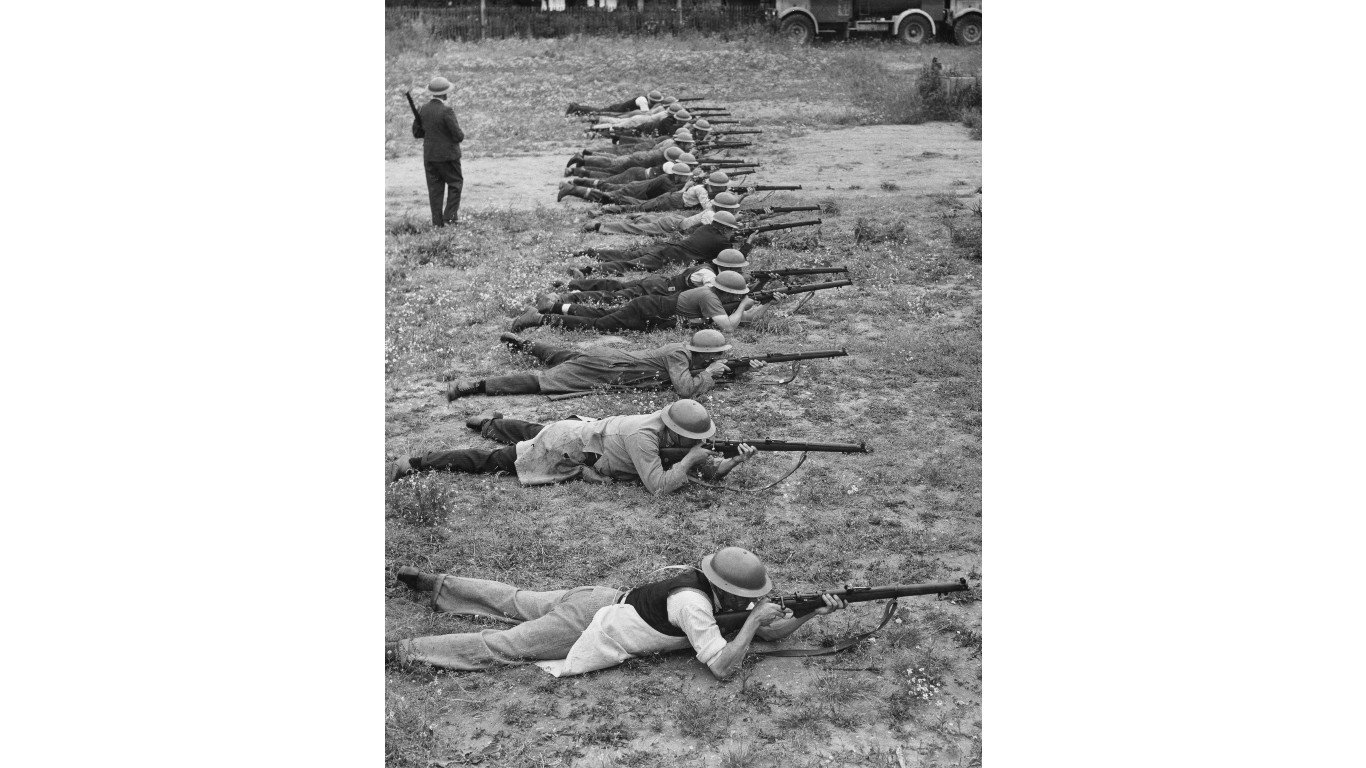
- Used by: Great Britain
The Lee-Enfield rifle, adopted by Great Britain and Commonwealth forces, served prominently in both World War I and World War II. Beginning its production in 1895, it spawned over a dozen variants. During World War II, the short-magazine Lee-Enfield (often called “Smelly” due to its initials – S.M.L.E.) was a notable version, along with several later models. Over 17 million were produced in all from 1895 to 1956. Its impressive accuracy and dependability made it a preferred choice for British troops, featuring prominently in key battles like the Battle of Dunkirk.
Sten submarine machine gun
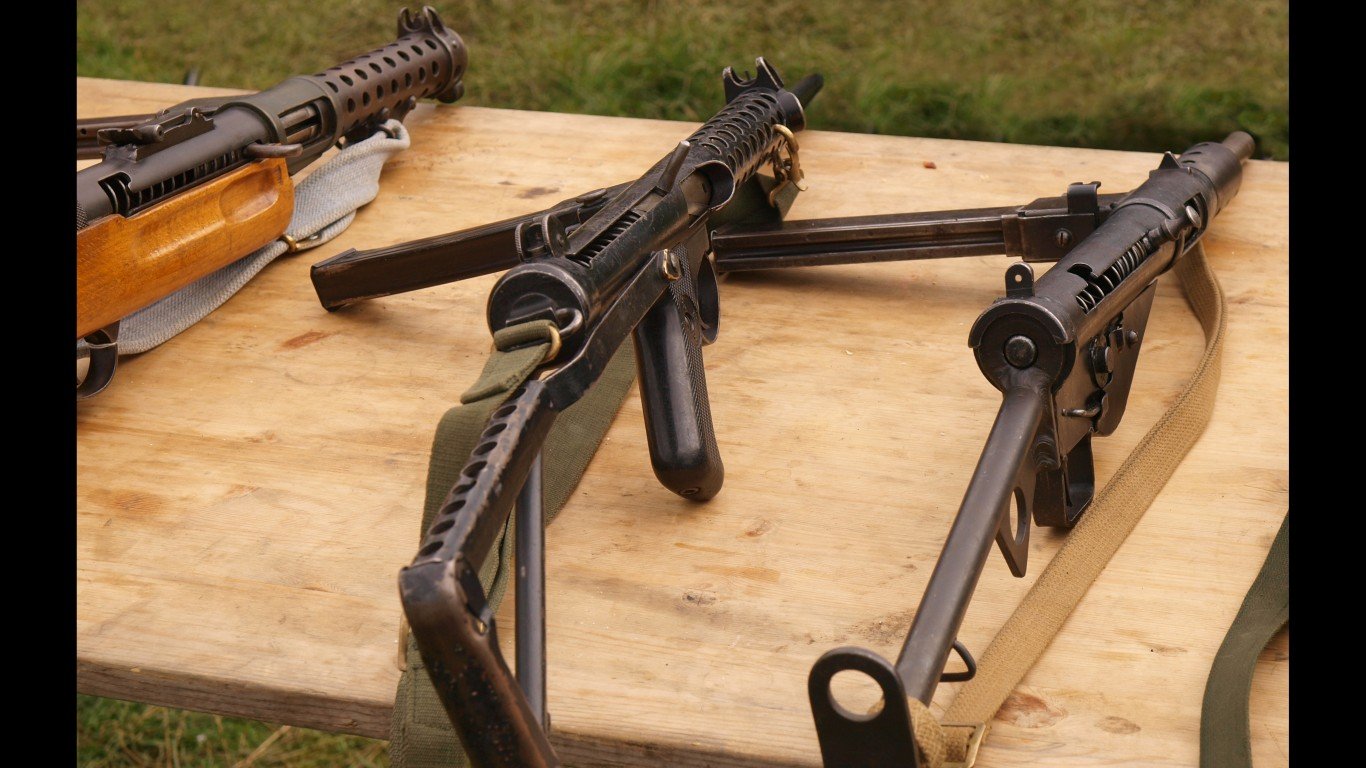
- Used by: Great Britain
The Sten submachine gun, available in various versions, was a popular British weapon used extensively during World War II. Dubbed “the Stench” or “Plumber’s Nightmare” due to its rudimentary welded metal tubing construction, it was mass-produced in the millions. The Sten saw widespread use by British and Commonwealth forces in Europe, North Africa, and the Pacific Theater.
Supermarine Spitfire fighter
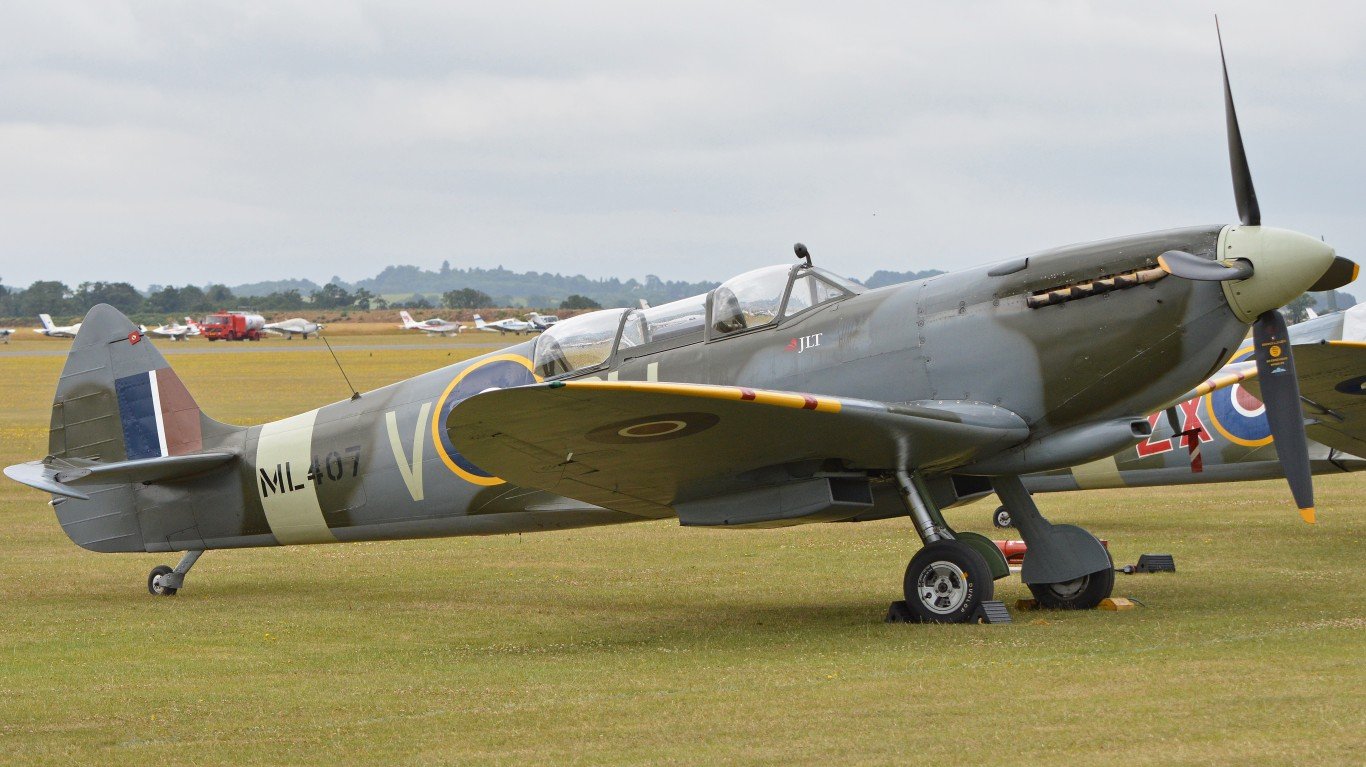
- Used by: Great Britain
The Supermarine Spitfire, a revered single-seater fighter aircraft, was used by Great Britain and its allies during World War II. Affectionately called “The Spit,” it was renowned for its agility and speed. It became an iconic symbol of the Allied victory, playing a crucial role in the Battle of Britain. With over 22,000 units manufactured, it stands as the most widely produced British fighter of the war.
Hawker Hurricane fighter
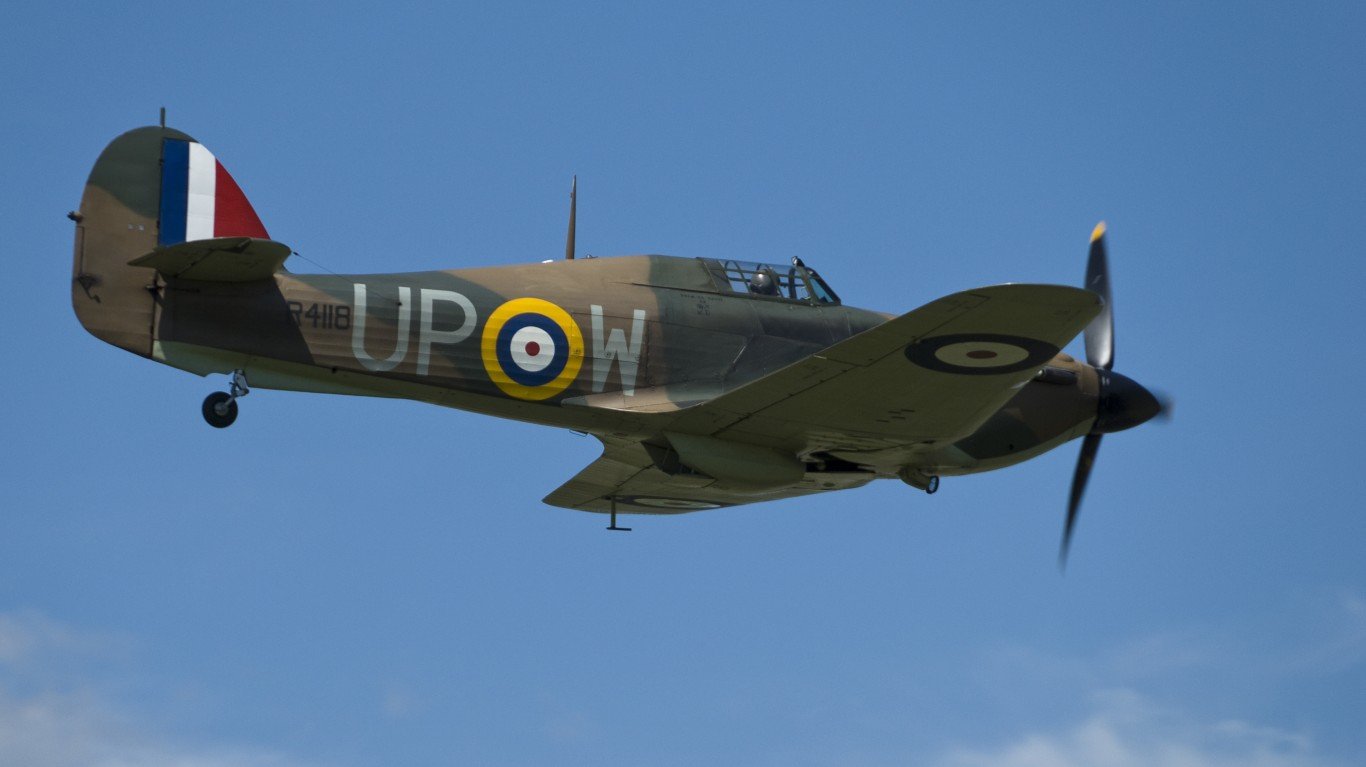
- Used by: Great Britain
Another British single-seat fighter, the Hawker Hurricane, didn’t gain the same level of fame as the Supermarine Spitfire, but proved highly effective against the Luftwaffe. It flew in many major battles, including the Battle of Britain. One variation, modified for ground attack, because know as the “Hurribomber,” while another one was dubbed “the flying can opener.”
Avro Lancaster heavy bomber
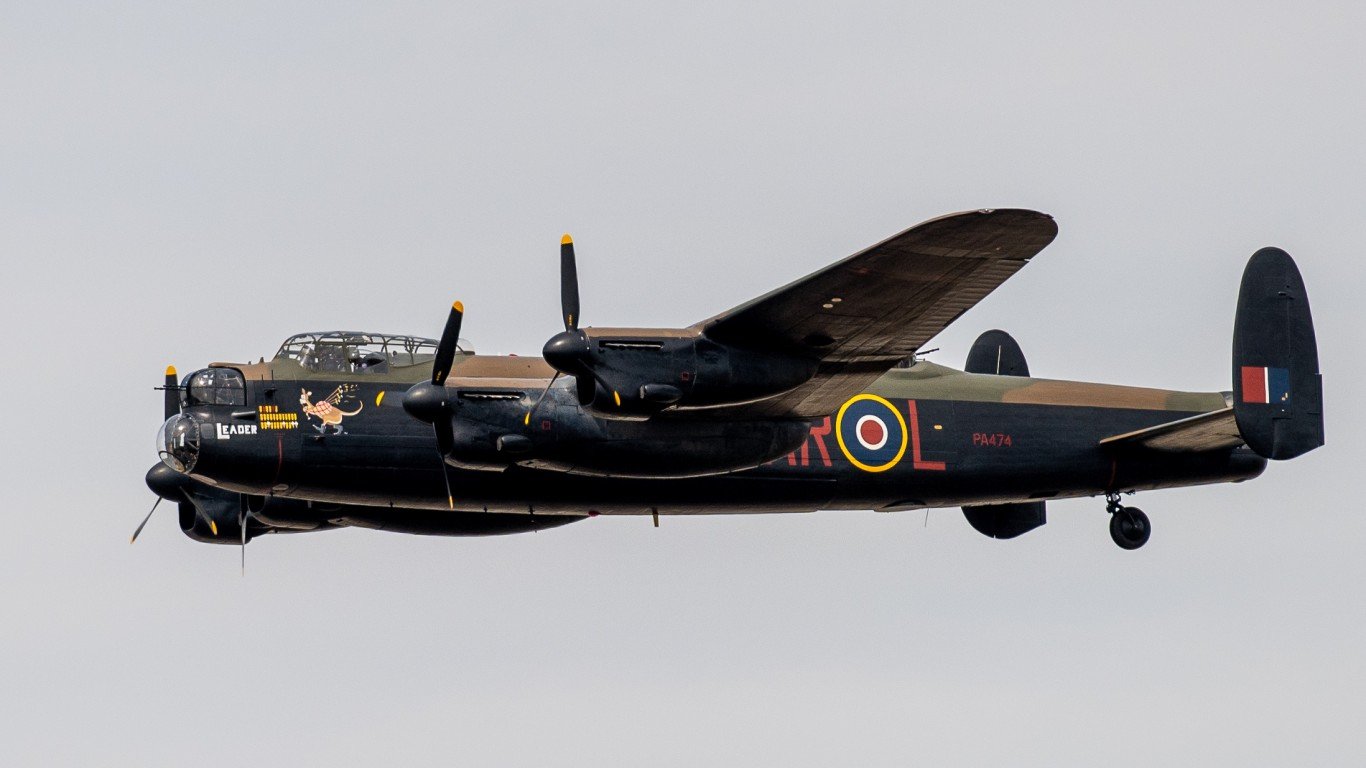
- Used by: Great Britain
The Avro Lancaster stood out as one of the premier bombers of its time, primarily recognized for its nighttime bombing missions over Nazi-controlled territories and for the famous Dambusters Raid (Operation Chastise) of 1943. This operation destroyed major dams in Germany, flooding the Ruhr and Eder valleys. The plane’s impressive size, payload capacity, and range made it well-equipped for challenging missions.
Mitsubishi A6M Zero fighter

- Used by: Japan
The Zero, known as the “Hamp” or”Hamp-Ki,” was a renowned Japanexe fighter aircraft in World War II. Produced in large numbers, these planes played significant roles in major battles like the Battle of Midway and the Battle of the Philippine Sea. Additionally, it was one of the planes used by Japan’s suicidal kamikaze pilots. With its powerful engines and sturdy design, the Zero proved to be an effective tool in Japanese hands and a formidable foe for Allied forces, frequently doing battle with its U.S.-made counterpart, the Lockheed P-38.

